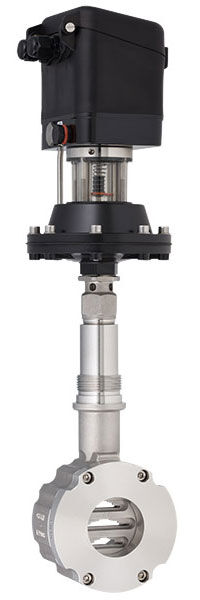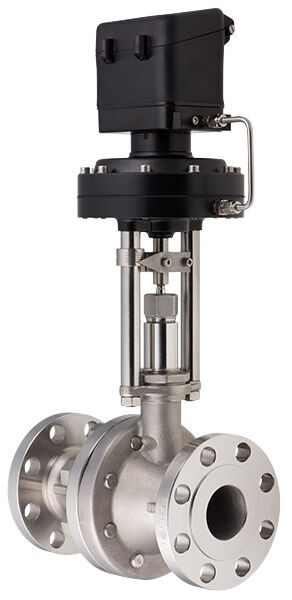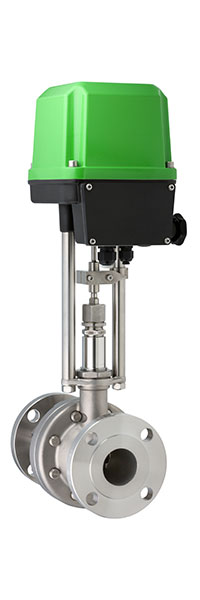
Sliding Gate Valves
Fast – innovative – precise for demanding applications
The alternative when the demands are high
The sliding gate valve series controls liquid, vapour and gaseous media precisely, quickly and economically. A sealing plate ( 2 ) fixed in the body ( 1 ) at right angles to the flow direction has a certain number of crossways slots ( 3 ) of equal height.
A moving disc ( 4 ) with the same arrangement of slots moves parallely to the fixed disc, thereby changing the flow cross section. The prevailing differential pressure presses the moving disc ( 4 ) against the fixed disc ( 2 ) and seals it.

The advantages of sliding gate valves
Standard packing environmentally safe
Schubert & Salzer‘s standard packing is certified by the TUV to comply with the German TA-Luft-standard which limits valve packing emissions. The applied testing procedure verifies if the tested sealing design is equivalent to a bellows solution. The measured leakage rate (after 150,000 full valve cycles) was 8E-8 mbar I/s and is far below the allowable leakage standard of 4.7E-6 mbar l/s.
Outstanding rangeability
Up to 160:1
Optimal flow control
Avoids cavitation problems in the valve and operates quietly by reducing turbulence.
Variable KVS-values
A simple exchange of the fixed disc (plate) is all that‘s needed to change the CV value at any time – possible range of CV = 0.021 to 1056.
High differential pressures
Using its unique compact design and low energy consumption, the GS valve gives accurate control of high differential pressures up to 1450 psi.
Minimal wear
Low turbulence means less erosion. The short stroke (1/4” to 1/2”) insures greater packing life and also requires reduced actuation energy.
Extremely low leakage rate
< 0.0001% of the CV value due to the self-lapping action of the moving disc and the pressure of the medium against the moving disc, using a surface seal instead of an annular seal.
Easy to install and maintain
Thanks to the compact construction, the low weight and the innovative seal disc design makes easy work of installation and maintenance.
Fits into tight spaces
Compact construction for minimum use of space and ease of installation.

Sliding gate valve – Efficiency
The outstanding feature of the sliding gate valve is the actuating force which is about just 10% of that needed to actuate a globe valve of the same nominal size and the same differential pressure. This permits the use of much smaller actuators even though both designs of the same nominal size have about the same flow rate! This beneficial feature stems from the fact that, in the sliding gate valve, closure is trans- verse to the direction of flow and not against it, as with the globe valve.

Sliding gate valve – Cavitation
A high rate of flow through the narrowest cross section of a valve will lower the local pressure below the vapour pressure of the liquid. Vapour bubbles form which then collapse in the regions of higher pressure. When they come into contact with solid boundaries (valve body), the imploding bubbles can cause damage. In the case of a sliding gate valve, these dangerous cavitation zones are external, or more accurately, they are located about 1 - 2 m beyond the valve. The cavitation bubbles then collapse around the centre of the pipeline where they can cause no harm.

Sliding gate valve – Vitality
Sliding gate valves are significantly „faster“ than conventional control valves. This can be shown using the frequency response when the set point value to an installed positioner is taken as the input value and the resulting stroke amplitude as the output value. The progression of the frequency response affects the standard of control of the entire control circuit.

Sliding gate valve – Weight
The low actuating force and short stroke allow the use of smaller actuators. Coupled with the space-saving wafer construction, weight and installation dimensions are minimised, particularly in the mid to large nominal sizes. This translates into about 330 lbs for a seat globe valve in size 6“, whereas a sliding gate valve of the same nominal size weighs a mere 33 lbs!



















